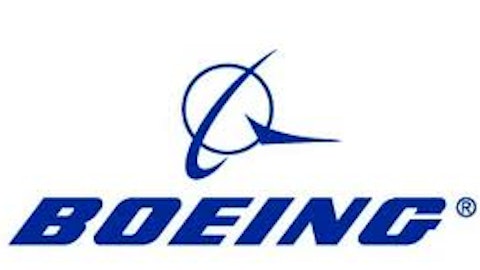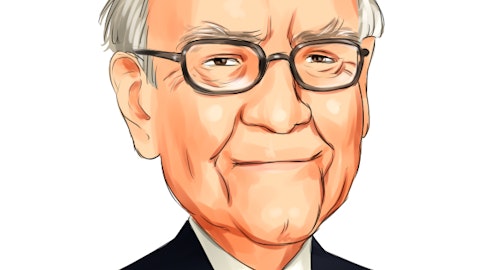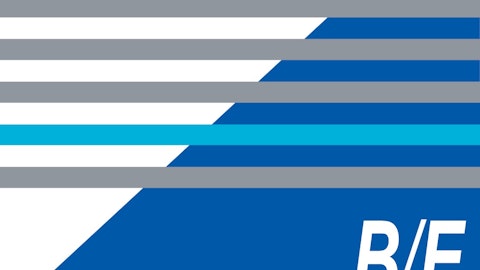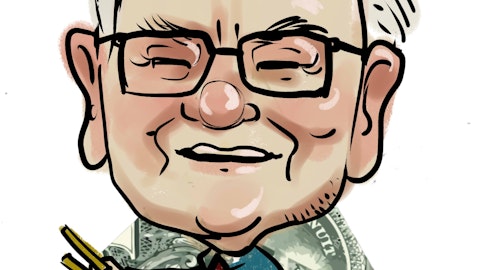Big airplanes and big wind turbines could both produce big profits for Hexcel Corporation (NYSE:HXL). This manufacturer looks like it’s doing fine in both areas. In early June, The Boeing Company (NYSE:BA) explained that its new, larger 787-9 model has entered the final assembly process. In May, Berkshire Hathaway Inc. (NYSE:BRK.B)‘s MidAmerican Energy announced a large wind turbine project in Iowa.
Airplanes
The 787-9 could be very appealing for airlines that fly larger planes simply because of its fuel efficiency. 20% lower fuel usage provides a major selling point for this Dreamliner model. The Boeing Company (NYSE:BA) also has a project in the works that could address other airline industry concerns. The Federal Aviation Administration’s CLEEN program website explains that The Boeing Company (NYSE:BA)’s working on a project that could reduce airplane noise and emissions.
Hexcel Corporation (NYSE:HXL) offers a product that can make airplanes less noisy. The Hexcel Corporation (NYSE:HXL) website explains that its honeycomb-based Hexweb Acousticap can cut engine noise by 30%, and this material appears in the engines of the Boeing 747-8 as well as engines of other manufacturers’ planes. Airlines that want to hear fewer noise complaints have another incentive to replace their old fleets, helping both The Boeing Company (NYSE:BA) and Hexcel.
Hexcel Corporation (NYSE:HXL) also discusses the advantages of carbon fiber parts on its HexMC page. Hexcel Corporation (NYSE:HXL) explains that carbon fiber parts don’t corrode and have lower maintenance requirements, but the manufacturer also states that small carbon fiber based connective parts have been difficult to cheaply produce in the past. These parts could cut future airplanes’ weight down even more, further reducing fuel use and emissions. Carbon fiber’s corrosion and maintenance advantages could also help Zoltek Companies, Inc. (NASDAQ:ZOLT) gain customers in the airplane business.
Wind power
MidAmerican looks very confident in the wind power industry right now. The turbine project announced in May could increase the utility’s wind power capacity by an additional 46%. MidAmerican explained that its 1,267 turbines currently produce 2,285 MW of power, and the new 656 turbine project could add an additional 1,050 MW of power. MidAmerican’s turbine projects also highlight an additional growth driver for the wind power industry. Rod Boshart and James Q Lynch, at The Gazette, report that Iowa governor Terry Branstad explained that major tech companies have placed data centers in Iowa partially because of the availability of wind energy.
Higher wind power demand definitely works in Berkshire Hathaway Inc. (NYSE:BRK.B)’s favor, which explains why this value oriented company plans to spend $1.9 billion on the turbines. Clean energy interest from tech companies could also reduce concerns about the renewal of the wind power production tax credit, a risk factor for both Hexcel and Zoltek Companies, Inc. (NASDAQ:ZOLT). Tech companies might be willing to pay extra for wind power even if the tax credit disappears.
Valuation
After Zoltek released its 2Q 2013 results, Hexcel still looks like a cheaper way to invest in carbon fiber. Zoltek has a forward P/E of 23 and a PEG ratio of 2.48, while Hexcel has a forward P/E of 17 and a PEG ratio of 1.44. Other factors do come into play here. The wind industry slowdown in 2013 hit Zoltek harder than Hexcel because Hexcel also collected revenue from its airplane parts business. Zoltek could see higher proportional gains in 2014 if wind power demand picks up. Pressure from activist shareholder group Quinpario Partners could also result in improvements at Zoltek. Zoltek’s 2Q 2013 press release noted that the carbon fiber maker was still considering its strategic alternatives.
With the Dreamliners flying again, The Boeing Company (NYSE:BA)’s shares have also been soaring. The aerospace giant’s shares have risen 29% in the last three months. At $99.61 a share, Boeing has a forward P/E of 14 and a PEG ratio of 1.12. Nevertheless, if Boeing finds high demand for its 787-9 Dreamliners, this rally could have further to go. In the long-term, technology gained from the CLEEN program could support Boeing’s future sales.






